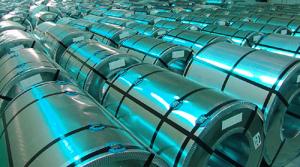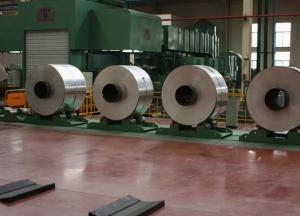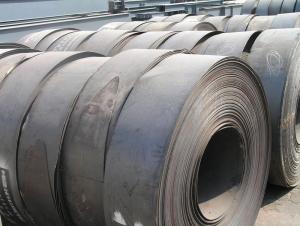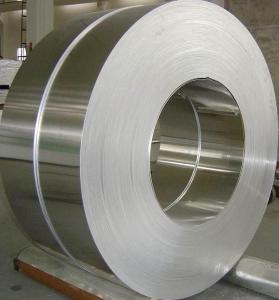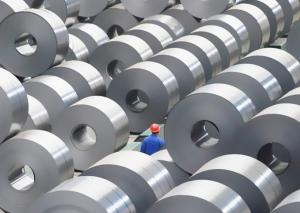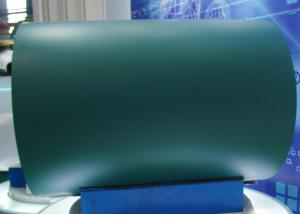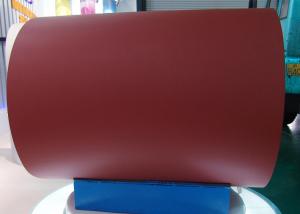High Quality Prepainted Galvanized Steel - Red
- Loading Port:
- China Main Port
- Payment Terms:
- TT or LC
- Min Order Qty:
- 50mt m.t.
- Supply Capability:
- 5000 tons per month m.t./month
OKorder Service Pledge
OKorder Financial Service
You Might Also Like
General Information Of Prepainted Galvanized Steel Coil
With GI as base metal, after pretreatment (degrease and chemical treatment) and liquid dope with several layers of color, then after firing and cooling, finally the plate steel is called pre-painted galvanized steel. Pre-painted galvanized steel is good capable of decoration, molding, corrosion resistance. It generally displays superior workability, durability and weather resistance.
|
Thickness 0.17-0.7mm (BMT) |
|
Width 750-1250mm |
|
Zinc Coating 40-160g/m2 |
|
Color According to RAL color fan |
|
Internal Diameter 508mm or 610mm |
|
Coil Weight 3-8MT |
|
Quality Commercial and structural quality |
|
Paint Polyester paint for topside, epoxy for reverse |
|
Standard JIS G 3312, ASTM A755M, EN 10169 |
|
Base Steel Grade SGCC,SGCD,DX51D+Z,DX52D+Z;S200GD,S220GD, S280GD,S350GD,CS,FS,SS |
Chemical Composition Of Prepainted Galvanized Steel Coil
|
C |
Si |
Mn |
P |
|
0.04-0.06% |
0.01-0.03% |
0.18-0.22% |
0.014-0.016% |
Technical Data Of Prepainted Galvanized Steel Coil
|
Yield Strength |
(Mpa) 280-320 |
|
Tensile Strength |
(Mpa) 340-390 |
|
Elongation |
20%-30% |
|
Reverse Impact |
9J |
|
T-bending |
≥2T |
|
Pencil Hardness |
≥2H |
|
Duration Of Salt Spray Test |
500 H |
|
Bending At 180 Degree |
No crack, purling and fraction |
Application Of Prepainted Galvanized Steel Coil
Outdoor:
roof, roof structure, surface sheet of balcony, frame of window, door, door of garage, roller shutter door, booth, Persian blinds, cabana, etc.
In door:
door, isolater, frame of door, light steel structure of house, home electronic appliances, etc.
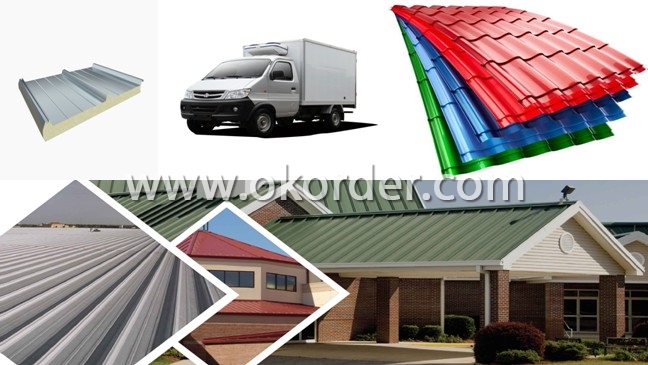
Packaging & Delivery Of Prepainted Galvanized Steel Coil
Anti-damp paper inside full wrapped with plastic film, iron sheet outside on wooden pallet in 20 feet container with 25mt.
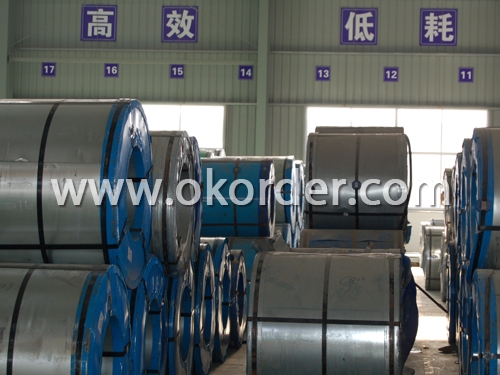
- Q:What are the different types of steel fencing and their applications?
- There are several types of steel fencing available in the market, each with its own unique features and applications. Some common types include ornamental steel fencing, chain-link fencing, welded wire fencing, and palisade fencing. Ornamental steel fencing is known for its decorative appearance and is often used to enhance the aesthetics of residential properties or public spaces. It is widely used in gardens, parks, and residential yards. Chain-link fencing, on the other hand, is a popular choice for many applications due to its affordability and durability. It is commonly used in commercial and industrial settings, as well as in residential properties for security purposes. Welded wire fencing is a versatile option that can be used for various applications, including agricultural enclosures, animal pens, and security fencing. It is known for its strength and can withstand harsh weather conditions. Palisade fencing is primarily used for high-security applications. Its design, consisting of vertical steel bars with pointed tops, makes it difficult to climb, providing excellent security for commercial and industrial properties. Overall, the choice of steel fencing depends on the specific needs and requirements of the project, whether it's for decorative purposes, security, or durability.
- Q:What are the different types of steel wire ropes and their uses in marine applications?
- There are several types of steel wire ropes used in marine applications, each with its own specific use. Some common types include galvanized wire ropes, stainless steel wire ropes, and non-rotating wire ropes. Galvanized wire ropes are coated with a protective layer of zinc, making them resistant to corrosion and ideal for use in marine environments. Stainless steel wire ropes, on the other hand, are highly corrosion-resistant and are often used in applications where strength and durability are crucial, such as mooring lines or lifting equipment. Non-rotating wire ropes are designed to minimize twisting and spinning, making them suitable for tasks that require precise control and stability, such as crane operations. Overall, the choice of steel wire rope depends on the specific marine application and the desired characteristics of strength, corrosion resistance, and stability.
- Q:What are the different types of steel reinforcing bars?
- There are several different types of steel reinforcing bars, including deformed bars, plain bars, epoxy-coated bars, stainless steel bars, and galvanized bars. Deformed bars have ridges or patterns on their surface to enhance bonding with concrete. Plain bars have a smooth surface and are typically used in low-stress applications. Epoxy-coated bars have a protective layer of epoxy coating to prevent corrosion. Stainless steel bars are resistant to corrosion and are often used in environments with high moisture or chemical exposure. Galvanized bars have a layer of zinc coating for corrosion protection and are commonly used in coastal areas.
- Q:What are the different grades of tool steel and their applications?
- Tool steels are classified into different grades based on their chemical composition and properties. Some common grades include: 1. W-group tool steel: This grade includes water-hardening tool steels such as W1, W2, and W3. They are used for applications like punches, chisels, and woodworking tools. 2. O-group tool steel: Oil-hardening tool steels like O1, O2, and O6 belong to this grade. They offer high hardness, toughness, and wear resistance, making them suitable for cutting tools, punches, and dies. 3. A-group tool steel: Air-hardening tool steels like A2, A3, and A4 are part of this grade. They possess excellent toughness and wear resistance, making them ideal for forming tools, punches, and dies. 4. D-group tool steel: This grade includes high-carbon, high-chromium tool steels like D2, D3, and D6. They offer exceptional wear resistance and are commonly used for cutting tools, dies, and punches. 5. S-group tool steel: Shock-resisting tool steels like S1, S2, and S5 belong to this grade. They possess high impact resistance and are used in applications that involve heavy hammering or shock loads, such as hammers, chisels, and shear blades. 6. H-group tool steel: Hot-work tool steels like H11, H13, and H21 are part of this grade. They retain their hardness and strength at high temperatures, making them suitable for applications such as die casting, forging, and extrusion dies. Each grade of tool steel has specific properties that make it suitable for different applications, allowing for the selection of the most appropriate grade based on the desired performance requirements.
- Q:How does steel pipe threading for gas pipelines work?
- Steel pipe threading for gas pipelines is a process where threads are cut onto the ends of steel pipes to allow for connection and tight sealing. This threading is typically done using a specialized threading machine that cuts precise grooves into the pipe's outer surface. The threaded ends of the pipes are then joined together using fittings, such as couplings or elbows, to create a secure and leak-proof gas pipeline system.
- Q:What are the applications of alloy steel in the aerospace industry?
- Alloy steel is extensively used in the aerospace industry for various applications due to its superior strength, durability, and resistance to corrosion. It is commonly employed in the manufacturing of aircraft components such as landing gears, engine parts, turbine blades, and structural elements. The high strength-to-weight ratio of alloy steel enables the construction of lighter yet stronger aircraft, resulting in improved fuel efficiency, increased payload capacity, and enhanced overall performance. Additionally, alloy steel's resistance to extreme temperatures and pressure fluctuations makes it an ideal choice for aerospace applications, ensuring the reliability and safety of aircraft in demanding operational conditions.
- Q:How are steel gratings used in the construction of staircases and platforms?
- Steel gratings are commonly used in the construction of staircases and platforms to provide a safe and sturdy walking surface. They are installed as treads on staircases and as flooring on platforms, ensuring proper traction, preventing slips and falls, and allowing for efficient drainage of water or debris. The open design of steel gratings also allows for better visibility and ventilation in these areas.
- Q:How are steel gratings used in the construction of industrial platforms?
- Steel gratings are commonly used in the construction of industrial platforms to provide a sturdy and safe flooring solution. These gratings are designed with an open grid pattern that allows for efficient drainage of liquids, debris, and other materials. They also offer high strength and durability, making them ideal for supporting heavy loads and ensuring worker safety. Additionally, steel gratings can be easily customized to fit specific platform dimensions and can be galvanized to resist corrosion, extending their lifespan in harsh industrial environments. Overall, steel gratings play a crucial role in creating robust and reliable platforms for various industrial applications.
- Q:How is steel used in the production of tools and machinery?
- Steel is used in the production of tools and machinery due to its exceptional strength, durability, and versatility. It is commonly utilized to create blades, gears, bearings, and structural components that require high strength and resistance to wear and tear. Additionally, steel can be easily shaped and machined, making it ideal for manufacturing various types of tools and machinery.
- Q:How are steel sheets used in the manufacturing of industrial machinery?
- Steel sheets are commonly used in the manufacturing of industrial machinery as they provide strength, durability, and versatility. These sheets are used for constructing machine frames, enclosures, and supports, as well as for creating various components such as gears, shafts, and brackets. The ability to mold and shape steel sheets allows manufacturers to customize machinery according to specific requirements, ensuring optimal performance and reliability.
1. Manufacturer Overview |
|
|---|---|
| Location | Shandong, China |
| Year Established | 2007 |
| Annual Output Value | |
| Main Markets | 90.91% Domestic Market 4.09% Southeast Asia 3.18% Africa 1.82% South America |
| Company Certifications | ISO 9001:2008 |
2. Manufacturer Certificates |
|
|---|---|
| a) Certification Name | |
| Range | |
| Reference | |
| Validity Period | |
3. Manufacturer Capability |
|
|---|---|
| a)Trade Capacity | |
| Nearest Port | Tianjin; Qingdao |
| Export Percentage | 71% - 80% |
| No.of Employees in Trade Department | 380 People |
| Language Spoken: | English; Chinese |
| b)Factory Information | |
| Factory Size: | Above 100,000 square meters |
| No. of Production Lines | 3 |
| Contract Manufacturing | OEM Service Offered Design Service Offered Buyer Label Offered |
| Product Price Range | Average |
Send your message to us
High Quality Prepainted Galvanized Steel - Red
- Loading Port:
- China Main Port
- Payment Terms:
- TT or LC
- Min Order Qty:
- 50mt m.t.
- Supply Capability:
- 5000 tons per month m.t./month
OKorder Service Pledge
OKorder Financial Service
Similar products
New products
Hot products
Hot Searches
Related keywords
